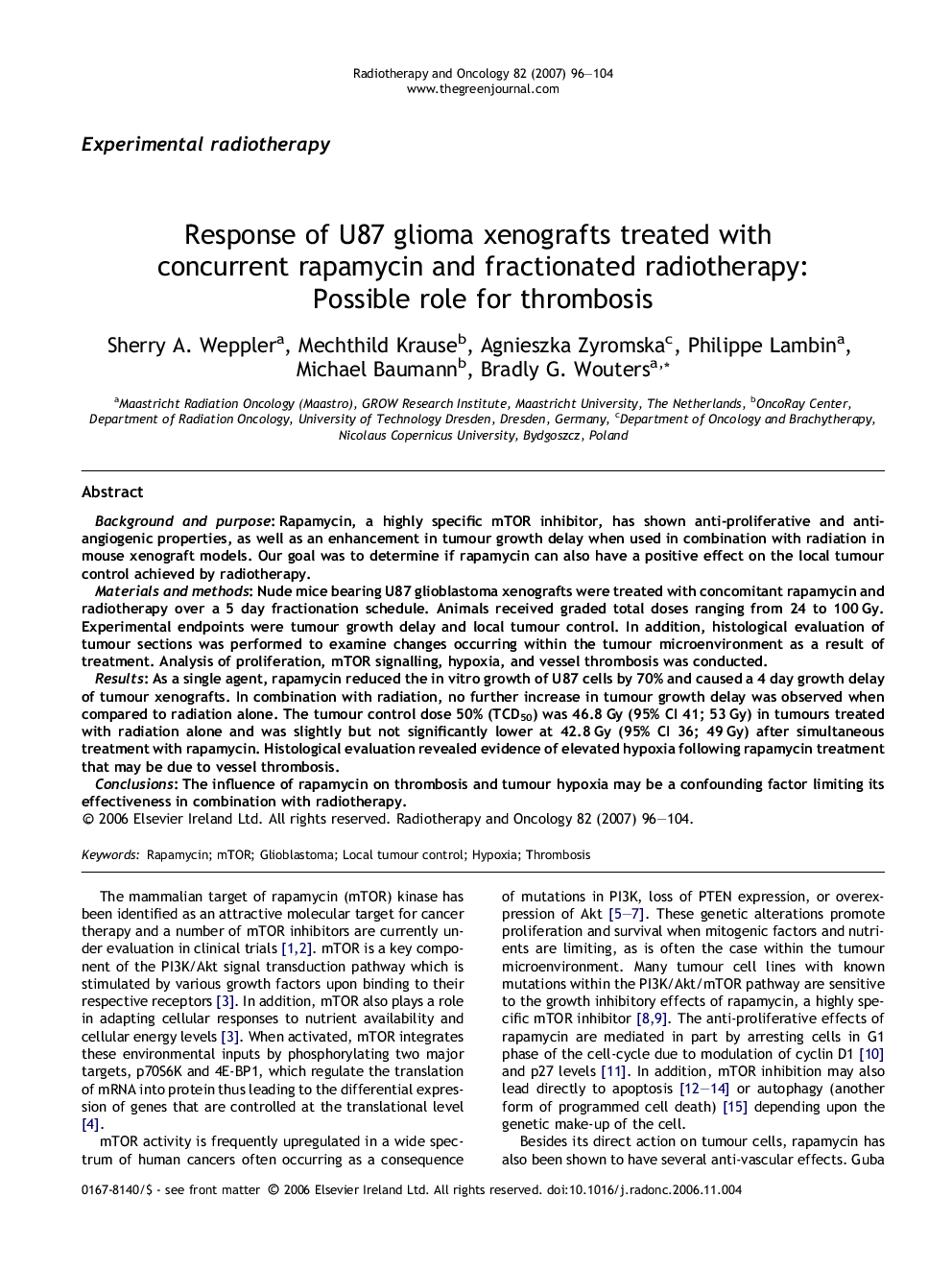| Article ID | Journal | Published Year | Pages | File Type |
|---|---|---|---|---|
| 2161121 | Radiotherapy and Oncology | 2007 | 9 Pages |
Background and purposeRapamycin, a highly specific mTOR inhibitor, has shown anti-proliferative and anti-angiogenic properties, as well as an enhancement in tumour growth delay when used in combination with radiation in mouse xenograft models. Our goal was to determine if rapamycin can also have a positive effect on the local tumour control achieved by radiotherapy.Materials and methodsNude mice bearing U87 glioblastoma xenografts were treated with concomitant rapamycin and radiotherapy over a 5 day fractionation schedule. Animals received graded total doses ranging from 24 to 100 Gy. Experimental endpoints were tumour growth delay and local tumour control. In addition, histological evaluation of tumour sections was performed to examine changes occurring within the tumour microenvironment as a result of treatment. Analysis of proliferation, mTOR signalling, hypoxia, and vessel thrombosis was conducted.ResultsAs a single agent, rapamycin reduced the in vitro growth of U87 cells by 70% and caused a 4 day growth delay of tumour xenografts. In combination with radiation, no further increase in tumour growth delay was observed when compared to radiation alone. The tumour control dose 50% (TCD50) was 46.8 Gy (95% CI 41; 53 Gy) in tumours treated with radiation alone and was slightly but not significantly lower at 42.8 Gy (95% CI 36; 49 Gy) after simultaneous treatment with rapamycin. Histological evaluation revealed evidence of elevated hypoxia following rapamycin treatment that may be due to vessel thrombosis.ConclusionsThe influence of rapamycin on thrombosis and tumour hypoxia may be a confounding factor limiting its effectiveness in combination with radiotherapy.
